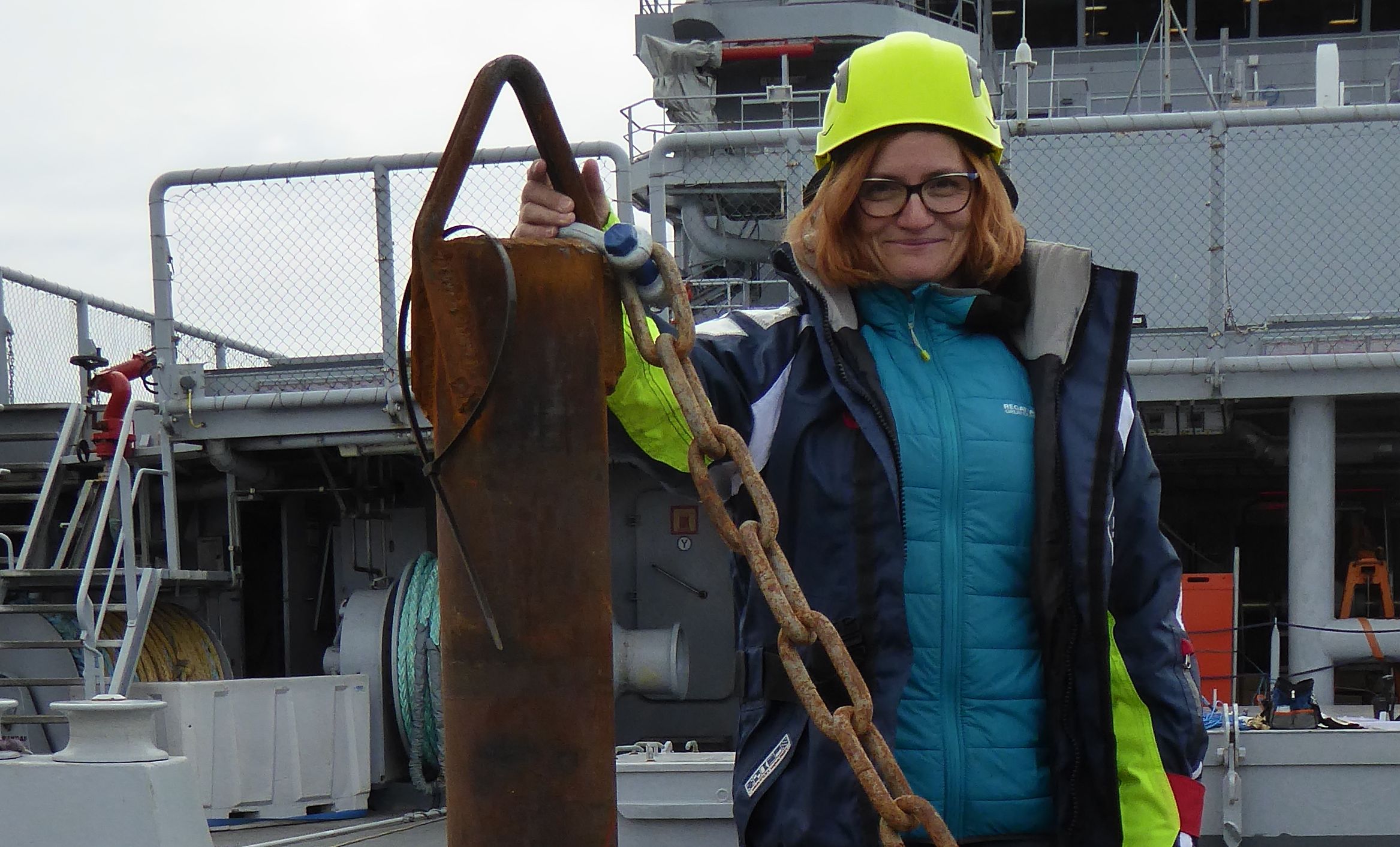
Agnieszka (IOPAN) aboard the KV Svalbard.
Winter is coming and most INTAROS researchers are already back home after the busy period of collecting new observations of atmosphere, ocean and seafloor, sea ice, glaciers, and snow, and oceanic and terrestrial ecosystems in different Arctic regions. While a number of fieldwork activities had already taken place during the pilot phase of the project in 2017, the first full-scale INTAROS field season in the summer and autumn of 2018 comprised numerous measurement campaigns all around the Arctic.
In line with one of the project’s main goals - to fill selected gaps in the observing network across the Pan-Arctic region - many new instruments and sensors were added to existing observatories and new data were collected from research vessels and icebreakers, aircraft, land towers and other platforms.
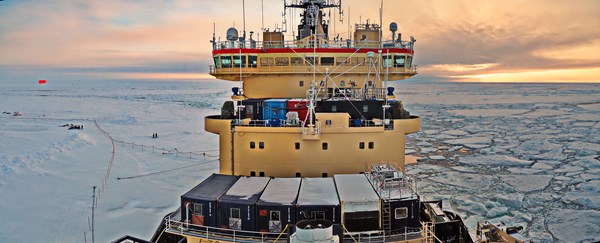
Arctic Ocean 2018: Icebreaker Oden at work, © M. Tjernstrom.
Some of the measurement data were transmitted via satellite links and received in real time, some were obtained just after a field campaign was completed, and others will be available only when the instruments deployed this year will be recovered next year. Data sets collected by INTAROS researchers will be archived in different data repositories but ultimately they will also contribute to the integrated system iAOS to be further employed to showcase examples of products and services towards different users.
During the 2018 field season INTAROS partners engaged in various activities: the measurement of greenhouse gases from airborne missions and terrestrial stations in Alaska, Canada and Siberia, collection of marine and glaciological data in Greenland, deployment of oceanographic moorings north of Svalbard, and bottom landers and seismic stations on the seafloor in the eastern Fram Strait, ship-borne ocean and atmospheric measurements around Greenland and Svalbard, studies of marine ecosystems in Kongsfjorden (Svalbard), glider experiments in the eastern Fram Strait and deployments of ice-tethered instruments for atmosphere, ocean and sea ice measurements in the Central Arctic from different icebreakers.
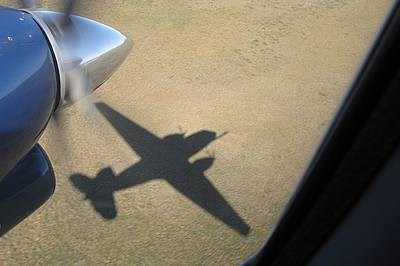
AIRMETH: Polar 5 flying at low lever over Arctic permafrost. Photo credit: J. Hartmann, AWI.
Just to get a glimpse into a variety of fieldwork activities, lets have a look at a few highlights…
A new line of six moorings, established by INTAROS north of Svalbard to extend the existing infrastructure dedicated to monitoring of the Atlantic inflow to the Arctic Ocean, was deployed from the Norwegian coast guard icebreaker KV Svalbard. The bottom-anchored moorings carry instrumentation for physical and biogeochemical measurements as well as for sea ice observations. They will operate autonomously for one year, collecting data every hour or even more often.
KV Svalbard was also used for deployment of ocean bottom seismometers on the seafloor in Fram Strait for monitoring the Earth's movements and detecting earthquake sources and activity. Earthquakes and landslides are also monitored by small seismometers that were installed in Longyearbyen as a part of community-based observing network.
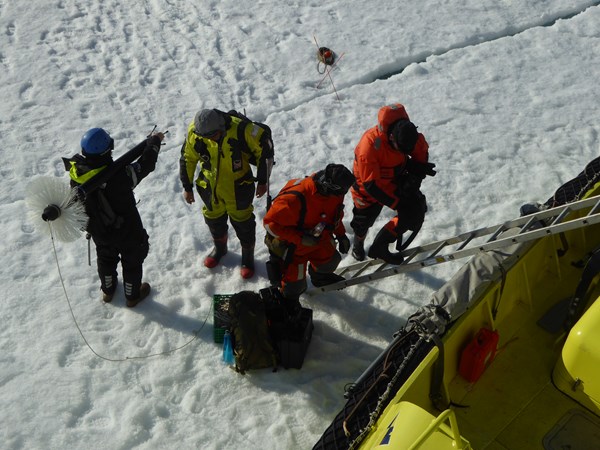
KV Svalbard: Embarking and disembarking is easy when you have an icebreaker in tow.
In the eastern Fram Strait the autonomous arcFOCE (Arctic Free Ocean Carbon Enrichment) system, developed to study impacts of ocean acidification on benthic organisms and communities, was deployed for one year of continuous measurements from the German research vessel Maria S. Merian.
In the west, repeated CTD sections and deployment of additional moorings in Young Sound were performed from the Royal Danish Navy ship Lauge Koch. They are aimed to study marine carbonate system, in particular impacts of melting ice on pelagic carbon cycling and contribute to the Greenland Ecosystem Monitoring programme. In the east, several CTD sections were covered in the Barents Sea Opening, eastern Norwegian and Greenland seas, Fram Strait and north of Svalbard by the Polish research vessel Oceania as a part of the long-term ocean monitoring programme AREX.

AREX: IOPAN's RV Oceania steaming between field stations off the coast of Svalbard.
A few Snow and Ice Mass Balance Arrays, known as SIMBA, were installed on drifting sea ice during the CHINARE2018 expedition of the Chinese research icebreaker Xuelong in the Canadian Basin and Alpha Ridge. The IAOOS ice-tethered platform, developed and built by the French IAOOS consortium and equipped with the ocean profiler, SIMBA and atmospheric package, was deployed for INTAROS during the Arctic Ocean 2018 expedition of the Swedish icebreaker Oden. The unmanned atmospheric observatory, consisting of an advanced weather station and an eddy-covariance system was also operating on board of Oden during this trip.
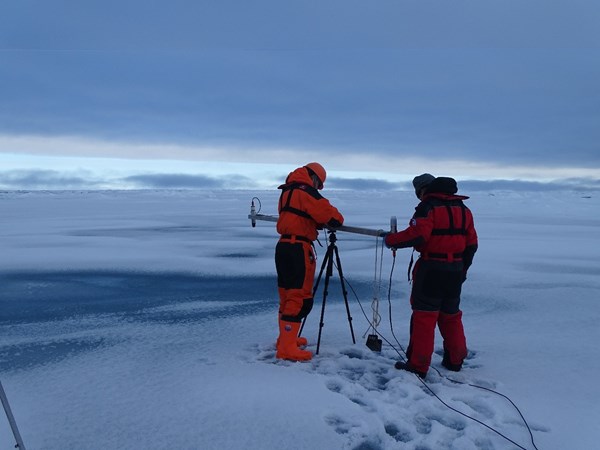
CHINAIRE2018: Deploy spectral radiometer on ice. © CHINARE2018 crew member.
Stay tuned to the INTAROS Newsletter and check out the website and social media (Facebook, Twitter) regularly for all the latest news from INTAROS and across the Arctic.
To find out more about INTAROS and the summer sampling campaign, visit our Recent News section.
You can check out all the observing sites assessed by INTAROS in this interactive map.
05 December 2018